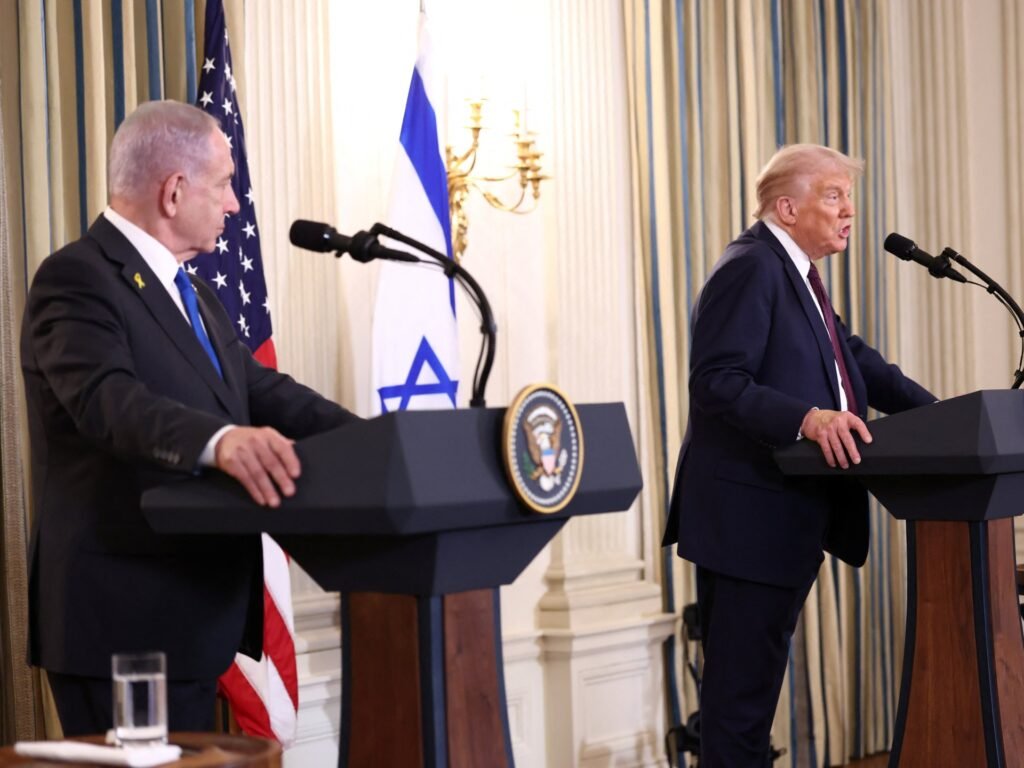Historic Peace Initiative: Trump Proposes 20-Point Plan to End Gaza War
United States President Donald Trump recently declared that the U.S. is “beyond very close” to achieving a resolution for the ongoing conflict in Gaza, following a high-profile meeting with Israeli Prime Minister Benjamin Netanyahu at the White House. During a press conference, Trump referred to the day as “historic” for peace and unveiled a 20-point peace plan aimed at bringing about a ceasefire and initiating dialogue between Israel and Palestine.
The 20-Point Peace Plan: Key Elements
Immediate Ceasefire and Release of Captives
The 20-point peace plan outlines several critical stipulations that, if accepted, could halt the hostilities nearly immediately. Among these provisions are:
- Dialogue Facilitation: The U.S. will act as a mediator to enable dialogue between Israeli and Palestinian forces.
- Swift Release of Captives: Within 72 hours following Israel’s acceptance of the agreement, all Israeli captives will be released. In reciprocity, Israel would release 250 Palestinians serving life sentences as well as 1,700 individuals detained in Gaza since the outbreak of conflict on October 7, 2023.
Conditions for Peace
The peace plan emphasizes that the war will cease if both parties agree to the terms, complemented by significant shifts in U.S. policy that pave the way for a potential Palestinian state. Reporting from Washington, D.C., highlights that this marks a deviation from previous strategies implemented under the Trump administration.
Future Governance of Gaza
A notable aspect of the proposal includes the creation of a Board of Peace to oversee the administration of Gaza. This board, chaired by Trump and featuring prominent figures such as former British Prime Minister Tony Blair, aims to provide a transitional governance framework to foster stability.
The Role of International Players
Qatar’s Diplomatic Involvement
Al Jazeera’s diplomatic editor, James Bays, noted that Qatar is poised to be a crucial mediator in this process. Historically involved in negotiations during the conflict, Qatar may leverage its relationships with Hamas to encourage acceptance of the peace plan. Additionally, Trump’s plan offers amnesty to Hamas members who agree to peaceful coexistence, while providing options for those who do not wish to comply.
Humanitarian Assistance and International Oversight
The White House’s proposal also envisions substantial humanitarian assistance for Gaza to be administered under UN supervision. This assistance would be crucial in addressing immediate needs while also laying the groundwork for long-term recovery and rehabilitation efforts.
Netanyahu’s Position: Support and Reservations
During the press conference, Netanyahu expressed his support for Trump’s initiative, stating it aligns with Israel’s strategic objectives. However, he articulated reservations about a developing Palestinian state and the role of Hamas and the Palestinian Authority in the negotiation process.
Differences with Palestinian Leadership
Bays elaborated on the discrepancies between the peace plan and Netanyahu’s stance, particularly regarding the potential role of the Palestinian Authority. While the deal suggests reform within the authority, Netanyahu remains cautious, advocating for no involvement from either Hamas or the current Palestinian leadership in any future governance framework.
Conclusion: A Fragile Path Forward
The proposed 20-point peace plan signifies a groundbreaking moment in U.S.-Middle East relations and offers a potential avenue toward resolving the Gaza conflict. However, the ultimate success of this initiative hinges on the acceptance and cooperation of all parties involved, particularly Hamas. The focus now shifts to whether the group will engage with these proposals, as the stakes are high for both regional stability and humanitarian conditions in Gaza.
For more in-depth coverage on the situation, visit Al Jazeera. The path to lasting peace may be fraught with challenges, but this historic moment invites hope for a renewed dialogue aimed at stability in one of the world’s most volatile regions.


